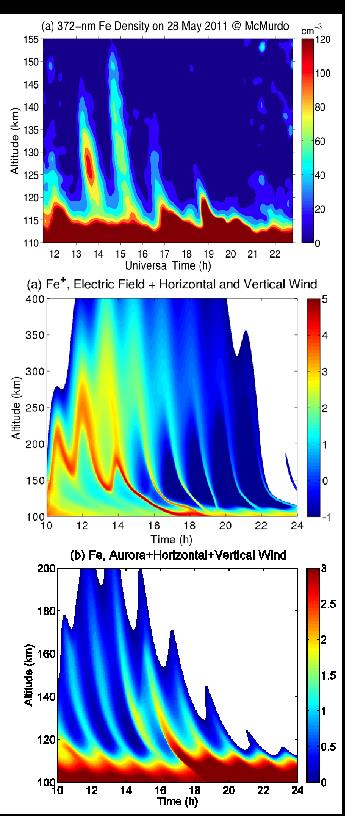Xinzhao Chu

Ph.D. Physics and Electrical Engineering,
Peking University, Beijing, 1996
Associate Professor, Aerospace Engineering Sciences
E-mail: Xinzhao.Chu@Colorado.edu
Web: Chu Research Group
Office: CIRES 241
Phone: 303-492-3280
Research Interests
Xinzhao Chu and her research group focus on both lidar technology development and atmospheric/space science study. The technology development involves atomic, molecular and laser spectroscopy, lidar technology and instrument development, and cluster remote sensing technology applications including observational campaigns from the North Pole to the South Pole. The science study is currently focused on the polar mesospheric and stratospheric clouds, thermal structure and dynamics in the stratosphere, mesosphere and lower thermosphere in both polar and equatorial regions with observations, data analysis, and modeling. One of the goals is to send a resonance lidar into space to study the global middle atmosphere dynamics.

Thermospheric iron (Fe) layers (top) discovered by lidar observations on May 28, 2011, at McMurdo, Antarctica (Chu et al., Geophys. Res. Lett., 2011) have been successfully modeled with a new thermospheric Fe/Fe+ model (middle and bottom) through the coupling between Fe+ and Fe layers in the polar geospace (Yu and Chu, J. Geophys. Res., 2014).
Current Research: Lidar marathons in Antarctica and plasma-neutral atmosphere coupling
Discoveries of thermospheric neutral iron (Fe) layers (Chu et al., Geophys. Res. Lett., 2011), solar effects on Fe layer bottomside (Yu et al., J. Geophys. Res., 2012), persistent inertia-gravity waves (Chen et al., J. Geophys. Res., 2013), and super-exponential growth of thermal tide amplitude above 100 kilometers (Fong et al., J. Geophys. Res., 2014) by lidar observations in Antarctica are challenging our understanding of electrodynamics, neutral dynamics, chemistry, composition, and energetics in Earth’s geospace environment. CIRES students Zhibin Yu and Weichun Fong in the Chu research group are developing numerical models to study the mechanisms. We achieved initial success, having successfully modeled the thermospheric Fe layers after carefully considering the neutral-plasma coupling and the influences of polar electric field, vertical wind, and aurora activity (see figure). These science discoveries are motivating the atmosphere and space science community with a new initiative, Observatory for Atmosphere Space Interaction Studies (OASIS).

"Members" of the lidar team (from left to right: Cao Chen, Xinzhao Chu, and Jian Zhao) deployed in the summer of 2013–2014 at McMurdo, Antarctica.

CIRES Ph.D. students Cao Chen and Jian Zhao jump up at Arrival Heights Lidar Observatory near McMurdo, Antarctica, to celebrate an extremely successful summer season and Chen's qualification to winter-over in 2014.
Selected Publications [ more publications ]
Click here for a complete list of published works »
Honors and Awards
- Faculty Early Career Development (CAREER) Award, National Science Foundation
- Director, Consortium Technology Center for the Consortium of Resonance and Rayleigh Lidars, National Science Foundation
Dr. Chu is a CIRES Professor.

